Angel Wings / Spring / Summer / Autumn / None Edible
Enter a world of wonder and caution as we delve into the fascinating realm of Angel Wings mushrooms (scientifically known as Pleurocybella porrigens). In this blog post, we embark on a journey to explore the delicate allure and potential dangers of these captivating fungi. While their appearance may seem ethereal and enchanting, it is crucial to tread carefully, as Angel Wings mushrooms possess a toxic nature that demands our utmost respect. Join us as we unravel the tale of these mysterious mushrooms, learn to identify them, and gain a deeper understanding of their captivating yet hazardous qualities. Let’s venture forth into the realm of Angel Wings mushrooms, where caution and curiosity walk hand in hand.
Common Names:
Angel Wings
Botanical Name:
Pleurocybella porrigens
Meaning of Botanical Name:
Pleurocybella meaning side by side, porrigens meaning stretching out sideways
Scientific Classification:
Kingdom: Fungi,
Division: Basidiomycota,
Class: Agaricomycetes,
Order: Agaricales,
Family: Marasmiaceae
Genus: Pleurocybella
Known Hazards:
This mushroom has been fatal to some people especially those with underlying kidney problems it’s believed its due to unstable amino acids but this species hasn’t been fully investigated.
Could be confused with:
Species of oysters such as the grey oyster or the Olive Oyster – neither of these are toxic.
Food of:
Insect larvae
Range and Distribution:
Found mainly in Scotland and northern England, and there have been a few records of it in Wales and Ireland. Also in northern Europe, Asia and north America where it is cooler.
Habitat:
Occurs on dead logs well-rotted conifer logs, often logs that are covered in moss, in damp shady places.
Physical Characteristics on Angel Wings Mushroom:
Cap
Pure white and smooth caps that are similar to a funnel cap mushroom but have a split so they don’t form a complete circle.
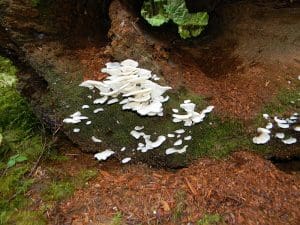
Gills
The gills are ivory and decurrent running down a very short stem or nub.
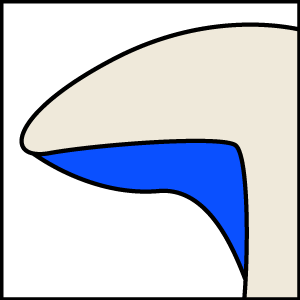
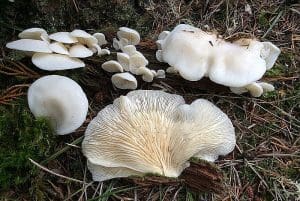
Flesh
The flesh is thin and fragile The spores are globose and white.
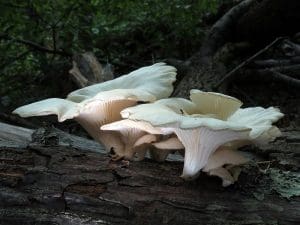
Stem
A small snub stem.
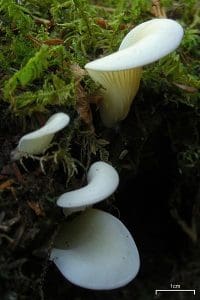
Spores
White Spores
Edible Use:
Due to the deaths linked with this mushroom, we do not advise eating Angel Wings.
Herbal:
Extractions from Angel Wings have been shown to have anti-cancer prperties in rats.
The last word goes to……..
This beautiful mushroom was once considered a fantastic edible but when 59 people in Japan became ill from eating this mushroom leading to 17 deaths for those with underlying kidney problems that seemed to not filter out the amino acids that caused severe brain lesions… not a nice way to go!



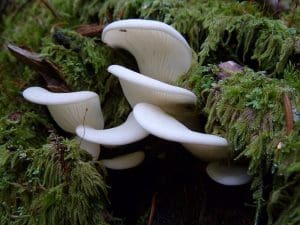
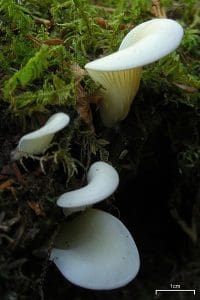



Leave a Reply
You must be logged in to post a comment.